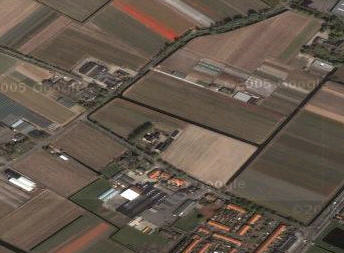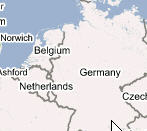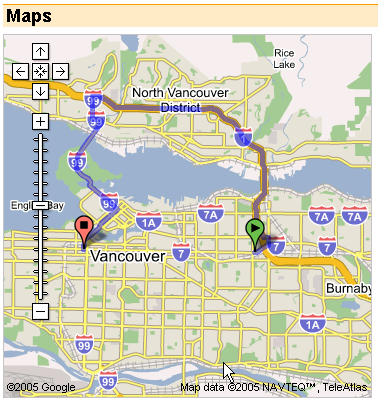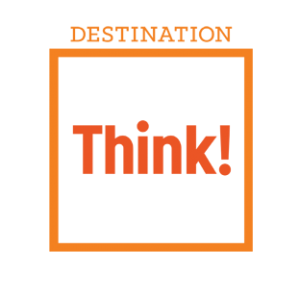» Next Entries
Category
Internet
-
Internet
Google Analytics, where is my invitation?
04.01.06 | Permalink | 8 CommentsSo it’s been months since Google introduced Google Analytics, a free web analytics package. I’m plugged into the internet community reporting on these things so normally I would have been one of the first to sign-up. But the announcement came when I was on a month long internet-free vacation. And in typical fashion, Google limited the number of users to be able to scale it’s service in a controlled fashion. It’s a free service so I understand that they can’t open to floodgates. But now here we are, months and months later and I still haven’t received an invitation and as far as I can tell, almost nobody has received an invitation since the initial launch. In my job I send hundreds of thousands of dollars on Google AdWords and even privately I spend money on AdWords. But I haven’t received anything. And the Google Analytics website is doing a good job marketing the service. A service you can’t use. It’s getting frustrating and it’s not in Google’s best interest to frustrate a large number of people who are in positions like myself.
-
Internet
IA Summit 2006
03.28.06 | Permalink | Comments Off on IA Summit 2006I spend the last 5 days at the IA summit here in Vancouver. It provided me with the new inspiration and ideas I needed. There were many great speakers but the best session I attended was Jarret Spool’s pre-conference day-long session about the scent of information. Another session, also by Jarret about optimal User Experience design teams was also very good and timely as my primary objective is to move the website forward through constant evolution based on contant learning. Jarret has researched successful design teams and has observed the following team structures:
- Consulting: One design team. This is not scalable as the team can only handle a small amount of projects.
- Review and Approve: Designs are governed based on standards and guidelines and each decision is approved by a governing body. This can lead to bottlenecks and therefore delays.
- Educate and Administrate: The structure that with the greatest chance of delivery. A culture that’s based on focusing on a clear vision and where everybody is responsible for a quality User Experience. Design should also move towards that vision. Instead of approval after the fact, educating the team should happen at the start of each project and a design problem is treated as a teachable moment. Feedback and new learning is quickly shared throughout the organisation.
During his session I realized that we’re currently in between 2 and 3. We do share learning a quick as we can but we also require approvals still for very tactical executions. Not just food for thought, something I’m going to address immediately. Jarret’s was kind enough to put a copy of his presentation online (PDF).
-
Internet
MSN Virtual Earth
MSN launched virtual earth this week. It’s an obvious attempt to keep up with Google in the map category. I was hoping for a great product and my expectations where high after a preview on Channel 9. Mostly for selfish reasons because our website runs on a Microsoft platform. Although it has some nice features such as a way of locating yourself on the map and a closer zoom then Google maps currently offers, I was disappointed. The product is very buggy (sure it’s beta, but what does that mean these days?) and the dated maps are a clear indication that shipping to keep up with Google was more important then delivering a quality product. Good luck trying to shake a reputation of showing outdated maps. It’s unfortunate because it has potential and now there is a risk disappointed users will make up their mind today and stick with Google.
-
Internet
Internet and Control don’t mix
From on of my heros at Adaptive Path; Create Value By Relinquishing Control. Make sure you also read Peters follow-up on his blog.
-
Internet
Google Map of my old place
To offset my little stab at Google in my previous post, here’s something cool from Google maps. I lived in this house in Lisse (the Netherlands) for almost 4 years before I moved to Canada. You can see all the tulip fields around it. The picture wasn’t taking during the spring when all tulips are in bloom though.

-
Internet
Google Map Error
Not to long ago, the place I was born didn’t exist according to Google maps. But now it turns out I’m born in Belgium instead of the Netherlands when I look at a specific level in Google maps. Sloppy.

-
Internet
Google Driving Directions

Here’s what Google suggest as driving directions for a 17 block trip on the same street here in Vancouver, BC. Instead of just going straight down the road for 5km (an 8 minute drive), Google suggests to take the scenic tour and go through the downtown core, through the park, over the bridge to the Trans-Canada highway, back over another bridge and to the same street again. A trip that, depending on the time of day, can vary from 30 mins to 2 hours.
Computer generated driving directions are great when you travel far (although there are exceptions), but not so great for smaller distances. It’s too highway focused.
UPDATE: I receive a lot of traffic (from Google) to this old post so here’s the latest. Google’s algorithm has improved and the issue has gone. But Google has a great sense of humour. See how Google suggests how you cross the Atlantic when traveling from Amsterdam to New York

» Next Entries

